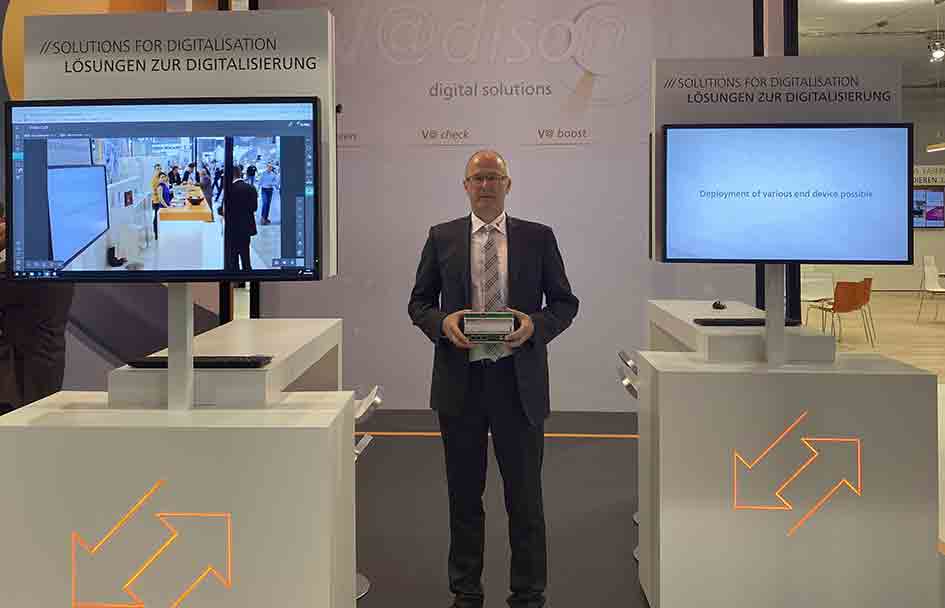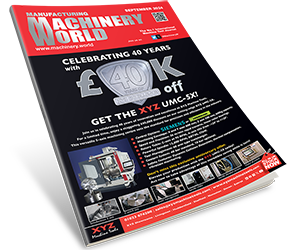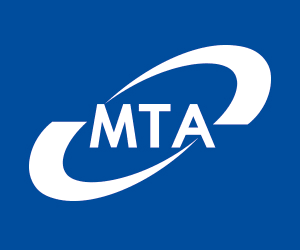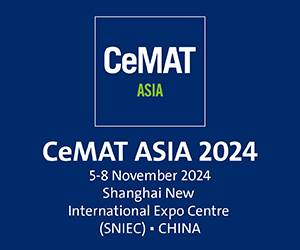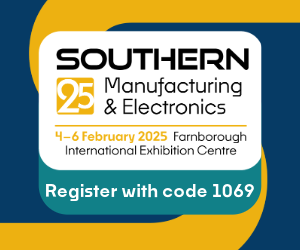We are in the infancy of the fourth industrial revolution, also known as Industry 4.0 or IoT – the ‘Internet of Things’. Whatever you want to call it, the world is evolving at an ever-faster pace and this fast-moving ‘fourth industrial revolution’ will be the difference between success and failure for many businesses. VOLLMER and its V@dison digital platform are leading the way, already reaping rewards for customers. In the first of a two-part journey through digitisation, we interviewed Wolfgang Miller, Customer Services Director at VOLLMER to take a closer look at the implementation strategy and the journey from concept to delivering tangible benefits for customers.
To understand where we are going, it is always a valuable lesson to know where we have come from. So, to brush over the last 300 years of industrialisation – the ‘first industrial revolution’ started in the 1700s in what many people would refer to as the ‘rise of the machines’. This started with the invention of the steam engine, coal mining and the manufacturing of railroads. This paved the way for the ‘second industrial revolution’ and the emergence of new energy sources such as electricity, gas and oil – all laying the path for the internal combustion engine, increased demand for steel and communication via the telephone. In the 1950-60s, the third industrial age arrived with electronics, PLCs, computers, robotics and automation – and that leads us neatly to Industry 4.0. While some would argue whether it is an industrial revolution, we are experiencing greater connectivity daily and the magnitude of the journey is yet to be fully realised….
Connectivity is fundamentally all about service. If you lose signal or connectivity with your mobile device – you have lost ‘service’. Industry 4.0 is more than just being connected and having ‘service’ – it is about the services that businesses can now provide through connectivity. Before we arrive at the potential benefits of connectivity, we need to look at how a company like VOLLMER roadmaps its journey.
Discussing this, Wolfgang Miller, Customer Services Director at VOLLMER says: “The best place to start is by looking back at what service used to be in the past. When we talk about service, we mean application, training, spare parts – everything. Between 2000 and 2022, there was a big change in customer behaviour and the information that they wanted – something instigated by Covid. We had our V@dison platform prepared to present at the GrindTec fair in March 2020, but everything was cancelled two weeks before the exhibition due to the pandemic. We started our preparation work in 2016, so when we entered the pandemic – VOLLMER had the solutions ready to support the customer during the unprecedented lockdown period.”
Looking at the starting point, Wolfgang says: “Machines from 20 years ago were mainly driven by mechanical parts and now, everything has electrical parts and is electrically driven – therefore it is digital. So, we also have to adapt our systems and behaviour and move towards digitalisation. Digitalisation is not only having digital components but giving the customer information through digital systems. Through our V@dison platform, our chosen system is Occulavis. It looks like ‘Facetime’ where you can see what the customer is doing in front of the machine. This means we can assist and instruct the operator and provide them with the next steps in the service operation – this system and route to digitalisation eliminate any communication errors between Vollmer and the customer. As part of a digital strategy, we want to be able to see what the customer sees instead of sending emails, images and documents that are open to interpretation and error. Furthermore, the time between a customer recognising a problem and requiring a solution has also compressed.”
How did the digital journey begin?
“We have long had an error message system that identified faults such as a server control card going down. Once this card was changed, there were opportunities to refresh the machine whilst on-site, but with different systems, components and software, it wasn’t possible to go into the system. Now, it is possible to log on to the machine and conduct work remotely, having the machine up and running in little more than an hour.”
“Digitalisation means sharing more information with our customers and subsidiaries – something previously considered a secret. The secret is within the software, not the machine. So, we are more open to sharing circuit diagrams and software releases with customers. This helps customers find the solution much faster and it helps us – as the customer can undertake more maintenance without our presence. To do this, we must have the most accurate information from the machine.”
“In the past, the human was always between machine and VOLLMER. They would find an error message, take a photograph and send it to us, and if it was not clear – there would be a communication issue and time could be lost. Now, with digitalisation, we can log onto the machine and see what the issue is. This ability to react quicker and more accurately was recognised years ago and this was our foundation for digitalisation and determining what we could do to get the correct information from the beginning.”
“So, the foundation blocks were determining what information we needed, when we needed the information and how we would collate the information – this was the start of the digitalisation project. Now, our journey means that we can talk about our online shop, pictures of spare parts, the IoT Gateway, the Visual Support and Visual Instruct – everything together makes our digitalisation one complete element of our service.”
How did the building blocks of the journey form?
“We started in 2016 with a service manager meeting where our global subsidiaries were invited to our first 3-day workshop for digitalisation. This was also attended by an external digitalisation expert. We asked our colleagues what they understood about digitalisation and what needs they have – as we needed to understand the different cultures, not just the subsidiaries. The digitalisation consultant had extensive experience in the machine tool industry and this opened our minds to what we could achieve.”
“With an open forum, there was positive feedback from both our subsidiaries and customers. After this workshop, we started our journey. We created an error database and a media database. We created lots of different things with all of the documents from 2016 and with this information, our digital teams started constructing more of the framework themselves.”
What were the workshop outcomes that built the foundation?
“The workshop gave us 36 different themes to work on. For example, one of the 36 elements was identifying we had five operating systems across our machines. All of our subsidiaries and their customers were using each of these machine types, so they had to understand five different control systems and each system had its unique issues. With this key area, we recognised that we could reduce the number of control systems and components – now we only have three systems. The longer-term plan is to get to two control systems. The result is that our engineers will have one control system for collecting data on their laptops rather than requiring multiple systems and cables.”
“Another of our 36 trigger points is spare parts and communication. We have given the customer the complete data and structure of the machine, they can choose whatever they need. Now, the customer can identify the system, select the 3D drawing and identify the exact component that is required – but it will progress beyond this.”
Taking the Process Forward
“To progress our key identifiers, our starting point was to consider what we could undertake internally. With our service department, it was evident that we could undertake 7, 8 or 9 of the tasks. This involved collating the information, bringing it onto our internal extranet portal and then using the information from the service views, the error messages, the databases, the operation manuals, all of the software versions, and the inspection tasks – we essentially brought everything the customer could not necessarily access together.”
“We also worked out what would bring the most benefit. This helped us create a priority list to work through. Once we completed the first couple of tasks, we then created a workshop where we could collate information from different teams and identify a structure to fulfil our requirements. So, with five different control systems, our service team had to discuss a route forward with each different control system product manager.”
Getting your priorities right
“One of our key points was not having access to the machine and seeing what the customer could see. We needed the possibility to go onto the machine using FastViewer, TeamViewer or another system. We selected TeamViewer and now this is installed on every new machine. It can also be installed on existing machines. Now, we send the customer an email and give them an access code and as soon as they input the code, we can access the machine.”
The current position
“At the moment, we have worked through many of our 36 key identifiers and the implementation of a new control system on some new machines is underway to accelerate the journey further. You can be sure that we are now constructing a new list and finding new opportunities to progress beyond our initial wish list of points.”
Internal culture changes
“Some of the challenges in achieving our goals have been communicating internally with production, finance and IT departments. For instance, they could not understand why we wanted to reduce the number of control systems, why we needed more information or why we wanted direct access to the machine – but we wanted to create an autonomy where we would have fewer spare parts. For some of these departments they have only been working with one particular machine for several years, but in the service department we work with every machine – when you have so many machines, it makes service more difficult,”adds Wolfgang.
The benefits of digitalisation
“The big benefits are cost and time-saving. We also expect fewer people will travel in the future, so we have to create possibilities where our people can work remotely and still effectively support our customers. Our engineers have been prepared for many years to travel to help our customers, but with the increasing quality and content of the information we can retrieve from customers – we can support them comprehensively from remote locations.”
Digitising spare parts
“Our spare parts department is excellent and we have a lot of components across all machine ranges – it is an area for our next improvement and digitalisation project. We started in January and we aim to take photographs of all spare parts for identification purposes. At the moment, we have 36,000 different spare parts and we have a few thousand photographs, so we are in the process of building and completing this project. The prototype model is complete and the field testing will start soon. This is a very cost-intensive project for VOLLMER, but it will give customers access to part images as well as drawings, eliminating any opportunity for ordering errors,” continues Wolfgang.
The future of communication
“Our IT gateway is a new communication network and our machines bring data to the IoT Gateway. Within that gateway, we can transfer the data from OPC UA, MT Connect or MQTT to communicate in the same language. If we are looking at OPC UA, it’s like we are all speaking German; or if a German farmer speaks with a German doctor – they are speaking a different language. With UMATI, which is the next step, the system combines and understands everything. We are in constant communication with UMATI and OPC UA and we are on schedule to complete this global communication platform. In the US, the main language is MQTT or MT Connect and these communication interfaces are complete. We are now on target to have a complete system that communicates with all languages. In the future, this means that all communication that comes from all machines and they will be able to communicate in synergy,” enthuses Wolfgang.
The next steps
“The next steps are to install our IoT gateway on all machines, this cannot be done until all communication platforms are completed. When this is completed, we can update all of our machines – but we have to prepare our machines for the future, now. This means that all our machines are IoT gateway ready, but the system is currently in the VOLLMER language. As soon as the systems are complete and the OPC UA and UMATI interfaces are ready for the industry, we can switch off the old channels and switch on the new channels. Hopefully, this will be completed in the coming months.”
“This switchover will not impact the customers, but the new IoT gateway will improve data network security as the systems have to adhere to directives from the European Central Government. Therefore, we have certificates and targets to meet every couple of months and this means the IoT Gateway and the machine tools will be a completely closed-loop, communicating through a single channel. The security and the ability to prevent viruses or attacks from external parties will be a big benefit for the customer.”
“Regarding training videos, we are probably on stage 2 out of 10. We have a huge project in front of us and our methodology is to have one specialist allocated to Occulavis, one specialist to create images for spare parts and another person responsible for creating videos. We have a schedule to make this work, and we started with the most critical points. However, subsidiaries in the US may have a different qualification process and level to subsidiaries in Asia or Europe, so we wanted to create a platform so easy to use that anybody can undertake service tasks.”
Where does it end
When asked where the Industry 4.0 journey ends, Wolfgang adds: “It ends when the machine tool supplier is providing the programs, and programming the machines remotely. Customers around the world have the same problem – getting a skilled workforce to operate machines. Businesses will want a machine that can do the job on its own and in the future, they will only want to know when to change the tools, blanks or saws and consumables. For service, it will be knowing when to change wear parts and undertake service after a certain number of running hours. Preventative maintenance is already built into the digital platform based on running time. In the future, it will also work on calendar days, combining both running hours and the calendar to better calculate the life-cycle patterns. Moving forward, our machines will have more sensors to record all data – with more data we can collate life cycle analysis to aid preventative maintenance and reduce costs for the customer.”


